Is it possible to stop snoring? Is there a difference between running outside and on a treadmill? Which food group really is the worst for us? Chris Smith is joined by exercise expert Dan Gordon, sleep specialist Nick Oscroft, dietician Sian Porter and wellness guru Tom Mole to answer all the health-related queries and quandaries people have been sending in.
In this episode

Are fad diets safe?
Chris Smith put this question to diet expert Sian Porter...
Sian - This really is the time of year; there’s hundreds of fad diets out there, particularly at the moment. Often there is a grain of truth or some science there but often it’s been extrapolated. It’s either been misinterpreted or it’s been bigged up beyond its means. If you take something like eating chillies, which will raise your metabolic rate, that’s something that we’ve observed in a lab and then you might have observed it in animals, but no human studies have been done or, if they have, they might just have been done on small amounts of people.
Chris - Made sweat quite a lot when I have them.
Sian - But then the amount that you have to eat, you’re talking about 50 plus chillies, and nobody can physically do this.
Chris - I was find. Dan’s nodding, he obviously likes curry as well as ...
Dan - Chillie
Sian - And there are dangers because often many of them tell you to remove whole food groups which, in the short term, might not do you any harm but in the long term it’s going to. Thinking about things like starchy carbs, something like fibre which affect your gut health, they obviously can put your diet out of balance which means then you might be overeating certain things and undereating other. Calories can be too low so you can be and, especially if you’re having to work and perform then you might just not have enough energy. They can be socially isolating; they can be very expensive so absolutely wouldn’t recommend them. If something sounds too good to be true it probably is, and if somebody’s trying to sell you something - beware.
Chris - Dan; when you’re exercising do you find that the diets you end up having to consume to perform at your optimum on the track, are they actually healthy diets or not?
Dan - I think if you look at them in relation to a conventional diet then they look quite different. I think one of the things we see in sport is that the diet has to fit the energetics of the sport. So the recommendations for say a track cyclist will be a very different to the recommendations for a marathon runner or even an ultramarathon runner. I was horrified when I worked with ultramarathon runners because I had made the assumption that we understand anything about nutrition suddenly these guys, it was nothing to do with carbohydrates, it was all just to do with energy intake. Cheeseburgers - it was whatever they felt like they could consume. For track cycling, we view it as being a healthy diet and you’d try and make sure you’d got the vegetables and you’d got the right balance but, actually, we were very much about carbohydrate and protein.

05:36 - What causes us to fall asleep?
What causes us to fall asleep?
Chris Smith put this tiresome query to sleep expert Nick Oscroft...
Nick - Within the brain, there are neural networks that promote wakefulness, and there are neural networks that promote sleep. To demonstrate that, in everyday life, we’re all aware that certain antihistamines can make you sleepy. They block the histamine system in the brain and that makes you sleepy. We know that histamine is one of the alerting systems within the brain, and there is this switch within the brain just as you’re getting drowsy, trying to drop off to sleep where the alerting systems and the systems promoting sleep inhibit each other. It’s almost like a switch where you switch between one and the other one to initiate sleep.
We can measure that in a sleep lab looking at brain waves. We measure EEG and that shows that you actually start with quite a high-frequency brain waves and as you drift off to sleep, go into the state 1 non-rapid eye movement sleep which is generally the first stage of sleep you go into, they start to reduce in frequency.
Then you go into stage 2 sleep where there are some very specific things we can see on the EEG; things called sleep spindles; things called K complexes. Then, as you get deeper into non-REM sleep, you’ll go into a very higher amplitude, but lower frequency slow wave, where you can see slow waves in the sleep, which is what we call them. And then REM sleep actually is a very active state of mind where your brain’s active and your eyes are flicking around.
So, as you’re dropping off to sleep we can see it happening as you’re getting drowsy on the EEG signal, but it’s really this switch that really takes you over the edge.
Chris - Any tips for giving people a good night’s kip - just a few bullet points?
Nick - My top tip would be routine: going to bed at the same time every day and getting up at the same time every day really gives your body a chance to allow all the hormonal changes and other changes that need to happen to happen, to aid sleep onset, and natural waking in the morning.
Giving yourself sufficient time in the current environment is also very important. Most of the population tends to be slightly sleep deprived and that really doesn’t help both in dietary terms, energy intake. It all has negative effects if you’re sleep deprived.

07:51 - How much stress is too much?
How much stress is too much?
Chris Smith put this question to Cambridge University psychiatrist Tom Mole…
Tom - Great question! I like it because stress is kind of talked about in a way where it’s always a bad thing or evil. But, if you’re going to be really scientific about it, and you took away all stress from your life you’d soon realise that you were understimulated, bored, and restless.
So then the question goes well what happens if you’re overstressed? And we’re probably all familiar with that feeling that we’ve got too much on and that we’re perhaps beginning to shutdown and feel a bit too stressed. My answer to that would probably be to find your personal sweet spot. It actually follows this Yerkes Dodson law where a little bit of stress or arousal in scientific terms is helpful, but too much and our performance rapidly goes down and our ability to enjoy life.
In terms of practical solutions I might say that you could probably look out for some of the red flags that you’re getting irritable, or you’re feeling like you can’t cope. But also to ask people around you because it’s often the person themselves can’t always tell if you’re swamped. So maybe find someone you trust: a friend, family, or colleague to report back to you: yes, you’re looking a bit too stressed and to check in with yourself. Obviously there’s health professionals and your GP if you are concerned.
Chris - So a little bit of stress is good. Too much stress and you begin to feel you have not sense of control and that tends to be deleterious to your life. Is that reflected in biochemical measurements we can make make of people? If we measure hormones and so one do we see that played out?
Tom - Exactly. The stress we feel every day has this corresponding hormonal Story that’s happening in the body in the background; cortisol being the main stress hormone. And we know that things like cortisol can prevent certain brain areas from growing and adapting with memory. For example, the prefrontal cortex, that big blob at the front of your brain that helps us with the more complex tasks, and the hippocampus which is involved in memory. It’s not just the stress you feel but it’ll be having an impact on your mind, your brain, your ability to remember things and get on with life. So yes, it’s really important to get that personal balance.
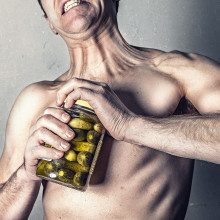
10:06 - Why do muscles get bigger after exercise?
Why do muscles get bigger after exercise?
Chris Smith asked sport scientist Dan Gordon...
Dan - The key to this is that not all exercise does this, in many ways. It’s very much about the load that you apply through the muscle. We talk about stress, and we have to apply stress and it’s a biological stress that you apply to the muscle. When we think about the muscle adaptation which, in essence, is the idea of hypertrophy which is that the muscle in itself bulking up. What’s actually happening is that it’s the muscle, in essence, resisting the load that’s being applied to the muscle. If I apply a greater load to the muscle then I’m going to create a greater stress. If I create a bigger stress, I produce more fatigue. If I produce more fatigue, I produce more biological adaptation.
The trick with it is that if I’m only applying a light resistance so, for example, I go to the gym and I lift a very light load, I can do lots and lots of reps, and actually what I train there is more the endurance of the muscle. If I want to make the muscle bigger, what I’ve got to do is apply a heavier load but I can only do less reps, and what starts to happen is, and one of the misconceptions is that we increase the number of muscle fibres. It doesn’t happen in the human. What we get is a hypertrophy, we get an increase in the size of the fibre.
The thing that fascinates me about this is that if you take somebody who’s never done any kind of strength training before, they will report quite quickly that they feel like they’re getting stronger. And, in fact, the load that they lift increases quite dramatically but the muscles haven’t got bigger at all. The reason for this is what we start to see in the first 8 to 12 weeks is you get a heightened neural recruitment of the muscle. So we actually recruit more motor units and, over time, as the muscle starts to adapt we get an increase in the cross sectional areas of the muscle. The neural recruitment starts to decrease. It’ll be heightened compared to where we were at baseline but it starts to decrease, and that’s because we’ve engaged more of the muscle fibres and the fibres are actually larger in size.
Chris - When you say the neural recruitment, say I want to lift something, message comes out of my spinal cord and activates the right muscle groups to do the lifting. But as I train that response, at least in the early stages, rather than say 10 different groups of muscle fibres turning on, I might be able to train myself to turn on 20 all at the same time and I’ll get more force out even though I haven’t made the muscle physically stronger?
Dan - Correct. The reason for that is partly because we don’t know what the movement is so the movement is actually alien to us.
Chris - Is that my nervous system rewiring itself to make that movement occur more otimally then?
Dan - In essence that’s exactly what’s happening. People talk about muscle memory, which I don’t think is a great phrase. But, if we think about it in that concept, the first time you do an action - you go and see somebody who’s doing olympic lifting. They’re lifting a bar and never done it before. The bar is moving all over the place, there’s poor coordination so what we do is we recruit what are called the synergists, which are the support muscles. But over time the prime movers that are involved in the actions start to become dominant and the synergists starts to decrease so that will explain why the neural recruitment goes down because we’re not recruiting these additional support fibres.
Chris - So if we want to be able to bulk up a muscle, to get the best of both worlds we need to train not just the reps - how long we can go for and get good blood supply into the muscle and so on, but you’ve got to stress the muscle in terms of lifting very heavy loads beyond what you would be comfortable lifting in order to stimulate it to grow more?
Dan - Correct. And the key to any adaption, it doesn’t matter whether it’s strength or endurance is you have to move beyond the biological habitual level, and the greater the amount of fatigue you produce, the bigger, potentially, the biological adaptation you’re going to produce. So, if I want to get a hypertrophy of the muscle, I’ve got to lift around about 85 to 90% of my maximum effort.
Actually, strength training’s really easy. It’s just two numbers, it’s threes and fives. If I want to get hypertrophy, then all I’ve got to do…
Chris - This is muscle getting bigger?
Dan - This is muscle getting bigger. All I’ve got to do basically is three sets of five repetitions. I can hear gym coaches now going no! If I just want to increase the pliability of the muscles, I want muscles that are stronger but not necessarily bigger, I just do it the other way round. I do it fives of three. And so if I’m doing threes of five, that’s three sets of five, I’m doing more reps, so I can afford to do a lighter load. If I’m doing it the other way round, I’ll do a higher load. And that changes the biological adaptation.
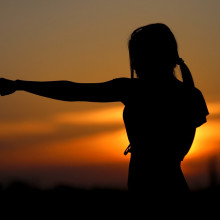
15:05 - Top health tips for 2018
Top health tips for 2018
with Dan Gordon, Anglia Ruskin University, Sian Borter, British Dietetic Association, Nick Oscroft, Royal Papworth Hospital and Tom Mole, University of Cambridge
Chris Smith asked the panel of experts for their top health tips from their field to start 2018 in the best possible way. First off was Sian Porter, nutrition and food expert from the British Dietetic Association.
Sian - I think it is to eat more vegetables. Really, every meal that you have think about where are the vegetables. Breakfast you could be having something like mushrooms, tomatoes. Your lunchtime when you go and get your sandwich, instead of having a packet of crisps have a side salad. And then your evening meal, get some vegetables in there.
Another good rule is to put your vegetables on your plate first. So fill half your plate with vegetables and then there’s less space for your carbs and your protein. Have them there, but if you put it on first, because classically you plate up your meat, carbs and then there’s this tiny little…
Chris - Everyone is nodding.
Sian - Yeah. And the other thing is to have some variety. We do tend to get into a bit of a vegetable and fruit rut, and there is huge variety. Things like frozen vegetables can really be your friend.
Chris - Are they okay then frozen veg because they’ve got a bad rep? People say oh, it’s not fresh - are they okay?
Sian - Sometimes they can be more fresh than than ‘fresh.’ They might have been frozen where they’ve been picked on site. Whereas other vegetables might have had to be transported and heat and light’s going to affect some of the vitamin content.
Chris - But why are vegetables good? Why are you banging the drum for vegetables? Because many people say I hate vegetables, I never eat them, they’re the devils thing. Why are the good?
Sian - They’re a great source of fibre. Fibre obviously helps keep your gut healthy, reduce your risk of certain cancers. Physically it will help fill you up, so when you're having that meal it will fill you up. They tend to be low in calories because they have a high water content, so you can eat a lot of them. They’re rich in vitamins and minerals and also they’re rich in phytochemicals, plant chemicals which seem to have health giving properties.
Chris - Dan; your top tip for 2018?
Dan - Any activity is better than no activity. I think we get caught up, a bit like when we were talking with the diets we get caught up in fads and new trends. Actually, what people should think about is the amount of time now that we spend sitting, and even if it just means at work, holding a meeting standing up or having a walking meeting. Or just at lunchtime, rather than getting the lift downstairs, walk down the stairs and walk back up stairs. I think - excuse the pun - it’s about taking small steps.
Chris - Or big steps?
Dan - Well, potentially big steps. It’s certainly not about trying to run before you can walk - another pun there. But it’s really about the fact we have to start slowly, and the key to exercise and the key to getting fitter is it’s like building a pyramid - you have to put the foundations in first. I think we get all excited about this really fancy stuff where we get all these intervals and this really short duration work actually, put the foundations in first, which is just about being physically active, then you can move onto that additional stuff.
Chris - And a mindfulness tip from you Tom?
Tom - I would say that in today’s modern life that’s so frantic and busy and littered with so much multitasking, why not give yourself ten minutes of “you” time every day. Try and think of a way to put it in the morning or your evening routine and use that as an opportunity just to do one thing and to give yourself that gift of unitasking or a break from multitasking. Perhaps turn the aeroplane mode on on your mobile, turn off the notifications calls, emails and try and rebalance that sense of giving yourself that relaxation time. Perhaps learning a new skill like mindfulness can give you that evidence based bit of a recharge for you and to rebalance how you’re doing in your day.
Chris - We’ll learn more about it a bit later on in the programme.
A tip from you Nick?
Nick - I would probably say, as I would, prioritise sleep. Sleep tends to get stuck in the corner. It’s often the thing that people say well, I’m really busy, what am I going to miss out on? I’ll miss out on an hour or two’s sleep because that’s a bit of a waste of time. I’m lying there unconscious, not doing anything, not getting anything done. But, actually, if you get into a good routine, make sure you get sufficient sleep for you, which is variable depending on the individual, you’ll be much more productive during the day, and much more efficient, and you’ll get a lot more done. So if you spend that extra one or two hours sleeping you’ll probably be better for it at the end of the day, and you’ll get everything you want done in a day more swiftly.
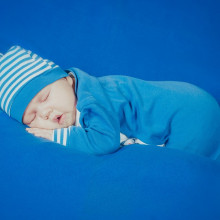
19:29 - Why does snoring exist?
Why does snoring exist?
Chris Smith asked sleepologist Nick Oscroft for his opinion on this snooze-fest...
Nick - That’s a fantastic question! One of the things that struck me about snoring is evolution. You said that why hasn’t it been evolved out? Well, the shape of our faces has changed quite considerably since we’ve transitioned from being apes into hominids, and then to humans. That’s aided speech, we’ve changed our diets, so I think all these changes may have predisposed us, to a degree, to snoring.
What is snoring? It’s turbulent airflow through your upper airway. Lots of things can make that worse: obesity is a big problem. We know that weight gain tends to make snoring worse.
Chris - Why?
Nick - Why? Because you lay down fat, as well as peripherally, internally around the larynx and the upper airway, and that narrows the upper airway. Also, most of us when we go to sleep the muscles in our pharynx relax so the upper airway, the muscles relax. If you fat-load that, it will shrink in volume and, therefore, you’ll get more turbulent flow through your upper airway. Also, it can predispose you to medical problems like sleep apnea where actually the throat shuts down during sleep because the muscles become too relaxed and that caused lower quality sleep and daytime sleepiness. Alcohol and various other things that people do make snoring a lot worse.
In terms of why hasn’t it been weeded out in evolution? I was interested by that. One theory I thought about was if you snored do you keep people around you awake? Does that actually protect you in evolutionary terms? It’s a controversial thought!
Chris - So you’re saying it’s been selected in? If your husband’s snoring and you’re therefore kept awake all night then you can wake him up if any danger appears. That’s a brilliant suggestion.
Nick - It might be a selection pressure - I don’t know.
Dan?
Dan - I was interested on that because I think part of the question was to do with animals and my dogs both snore. They’re terrible at it. But I was just wondering, now you’ve brought that up about this selection it’s made me almost rethink because in the animal kingdom you would almost have thought it was counterintuitive the fact that you’ve got an animal that’s snoring. But I’m just wondering if it’s the pack animals that snore, and if we take the solitary animals. If the solitary animals don’t snore because I like that idea that there’s somebody in the pack that’s more alert.
Nick - Well, I’ve been to zoos and I’ve seen many animals snore. With dogs I don’t know if, because they've been bred over time for certain characteristics, and we know certain bad characteristics have been bred into dogs in terms of the shape of their snouts, so we might be responsible, in part, for making dogs snore by the way we’ve selected them.
Chris - What about doing something about it? You’ve mentioned some of the points so you could reduce your alcohol consumption. Weight loss: presumably if you move some of the fat from around the internal tissues. I didn’t realise we accumulated fat in the way you’re saying inside and narrowed the airway but that should help to. But is there anything else, if someone’s a really bad snorer, that they could do about it?
Nick - Weight loss is normally top of the list. Also, avoiding supine sleep, so avoiding lying on your back whilst you are asleep, that almost tend to make…
Chris - You don’t have a lot of choice if you’re asleep though. You don’t really dictate what position you’re in can you?
Nick - You can do. There’s various strategies you can adopt.
Chris - The whole stitching cotton reels and fir cones into the back of your pyjamas - that idea? Is that what you’re getting at?
Nick - Certain people do do that. One of my more ingenious female patients puts her bra on backwards and puts…
Chris - Tennis balls in there or something?
Nick - Well, it’s a rubber dog ball. It’s quite spiky and that keeps her of her back so that’s quite inventive when she told me about that. I’ve suggest that to a few gentlemen, but they’ve blanched at that thought.
Chris - I’m not surprised!
Nick - Some people use foam wedges or pillows to stop themselves rolling over to their back. Partners are often helpful…
Chris - An elbow?
Nick - Indeed! There are biofeedback devices you can can buy that vibrate when you start snoring loudly and get you to roll off or change position to help with that. If you want to try something a bit more invasive there are devices called Mandibular Advancement Devices. They’re devices that go in the mouth, fit the teeth top and bottom and pull the bottom jaw forward. So they are a way of reducing snoring volume and also we use them to treat mild to moderate sleep apnea. But sometimes it’s just a fact of life.
Chris - I should just start with the simple stuff and build up from there then?
Nick - Indeed.

23:55 - What is mindfulness and does it work?
What is mindfulness and does it work?
Chris Smith put this question to mindfulness expert and psychiatrist Tom Mole…
Tom - Mindfulness is a simple skill that we’ve all got as humans to be aware of the present moment and to not judge it and just to allow it to be there as it is. Historically, it’s a practice of being aware. It’s been around for about 2½ thousand years originating out of South Asia. So historically, there’s a beautiful lineage of generation after generation of people saying, well actually if I just focus on what I’m experiencing right now. That might be the sound of my voice as you hear it or the sensations of your body right now if you’re sitting down or lying down, and just accepting them, and that teaching has really been passed on for generation after generation.
Over the last 10 to 20 years, it’s been more and more scientifically validated. In particular it’s most effective for stress reduction but it’s also been shown, and is in national guidelines now for venting mood problems and depression. And also helping people cope with anxiety and forming new habits and breaking habits whether it’s overeating or whether it’s smoking, so it’s quite an adaptive tool. But I do have to be careful not to overstep the evidence base and I think if you ever hear of someone saying that meditation mindfulness is something that can cure everything, a panacea, then then be careful, everything has its limitations but certainly, it’s a very strong technique for stress reduction and improving your sleep.
I think that, on balance, there’s an emerging evidence base that’s exciting and I think I’d just recommend getting out there and trying it for yourself.
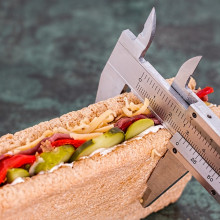
26:02 - Quiz - Fad or Fiction?
Quiz - Fad or Fiction?
with Dan Gordon, Anglia Ruskin, Sian Borter, BDA, Nick Oscroft, Royal Papworth Hospital and Tom Mole, University of Cambridge
Chris Smith put the panellists up against the quiz of the week, which this week focuses on health fads and products. Tom Mole and Dan Gordon teamed up against Sian Porter and Nick Oscroft.
Chris - Round one is diet fad or diet fiction. Can you separate the real diet from the one we made up?
We’re going to have two teams: team 1 we’re going to have Nick and Sian and then team 2 we’re going to have Tom and Dan. Basically, the quiz theme is health - we have three rounds, with a question each.
Round one is diet fad or diet fiction. Can you separate the real diet from the one we made up? Over to you Nick and Sian.
We’ve got two diets; two to choose from:
WALKING DIET - where you can eat anything you like, provided you only do it when you’re walking
Or - THE FIVE BITE DIET - Eat whatever you want—but only five bites of it.
Which is the real diet?
Sian - The five bites is real.
Chris - You’re going for five bites.
Sian - Yeah.
Chris - Do you concur with that Nick.
Nick - I do.
Chris - The five bite diet does exist but the walking diet doesn’t.
Maybe the walking diet should exist it sounds like a better solution to me.
Chris - Next team: for you Tom and Dan.
The Blood Type Diet - regulate your intake based on your blood type.
Or there’s The ring diet - if it can fit through a ring - you can eat it.
What do you think of that one?
Dan - They both sound crazy.
Tom - They do sound absurd. That doesn’t mean that neither of them exists though. The blood type. A lot of people don’t know that one so I’d hope that that would be the false one.
Tom - Let’s go with the ring one.
Chris - You’re going rings?
Dan - Yeah.
Chris - The answer is the blood type diet. Now we actually found this round quite hard, because every time we made up a diet we’d find out it did exist.
Round two is called ‘false alarm’. Which of these alarm clocks is actually being sold -
Sian and Nick - is it…
An alarm that screams and runs around the room so that you have to chase it or...
A rubber glove that slaps you repeatedly in the face until you get up and silence it
Nick - I’m going to go with the more ridiculous option which is the rubber glove that slaps you round the face.
Chris - Sian; agree with that?
Sian - Yeah, absolutely.
Chris - The rubber glove is fiction. One of them does exist though because inventor Simone Giertz has built one, but unfortunately - or rather, fortunately - they’re not for sale.
Over to team 2. Which of these exists and which are a fallacy?
An alarm clock in the shape of a gun, which will only turn off once you successfully shoot the target. Or…
An alarm clock in the shape of a bomb which you have to successfully diffuse each morning or it gets louder and louder.
What do you think?
Tom - Both sound quite dangerous.
Dan - I think I’ll go with the gun. It sounds relatively plausible.
Tom - let's go with the gun.
Chris - the gun-shaped alarm clock is the one actually available. Nick - You’re the sleep expert - does it make a difference how your alarm clock wakes you up in the morning?
Nick - There’s some evidence that if it wakes you up during REM sleep then it’s probably not such a good thing for you.
Chris - So if you’re having a dream and the alarm goes off?
Nick - If you’re having a dream, yeah.
Chris - Why is that bad?
Nick - Because I don’t think the human body likes being woken up out of dream sleep and generally the human body likes to wake up naturally. Unfortunately, most of us do wake up with an alarm and most of us use our mobile phones which tends to be the thing that everybody uses the days.
Chris - So if an alarm clock that syncs to brain waves that could work out when you weren't sleeping and, therefore, more sympathetically wrench you out of sleep would be better?
Nick - Yeah. There are devices that attempt to do that but how accurate they are in measuring sleep stage I’m not so sure.
Chris - Round 3, it’s all to play for. This round is called exercise lies.
So team 1, which is the real exercise product?
The Hawaii chair, which moves in small circles while you work, theoretically toning your abs ...or
The Alaska shoes – large shoes with weights that move around inside the sole, theoretically toning your leg muscle.
Which do you think is the real one?
Nick - I don’t know. I like the idea of the Hawaii hula hoop chair though.
Sian - Yeah.
Nick - Shall we go for that one?
Chris - Going chair?
Sian Yeah.
Chris - The answer is the Hawaii chair, although the company providing it are unsurprisingly no longer in business.
And last question for you Dan and Tom - which one is the real exercise fad?
Hamster wheeling - running in a specially built hamster wheel
Prancercise - the aim of which is to run in the style of a horse to burn off calories.
Dan - I think I’ve seen the hamster wheel.
Chris - You’re going for hamster wheel.
The answer is prancercise. Hamster wheeling we might have to wait for. Dan - do these kinds of fads or products seem like a good idea to you?
Dan - I actually thought I’d seen it. Maybe it was on one of those crazy shows like Jackass or something.
Chris - It must be true in that case.
Congratulations team 1 for winning, and if you got any of those listening.

31:09 - What makes you a morning lark or night owl?
What makes you a morning lark or night owl?
Chris Smith put this to sleep expert Nick Oscroft...
Nick - There are genetic studies looking at families that show there are some genes that predispose you to being a lark or an owl, but it’s not cast in stone. As a parent, and as I’m sure other parents experience is that as you journey through life your tendency does alter. Most teenagers do tend to go towards the night owl stage of things, as I know, as I drag my 13 year old daughter out of bed this morning at about 11. Then, as one ages, one tends to go to the more morning phase and need less sleep, so it does tend to change as you go through your life. But some people do have a stronger predisposition to be one or the other, and some people are neither. It also depends on external factors: whether you’re a shiftworker, whether you have to get there early for your job, and the external factors are probably more important because, unfortunately, most employers won’t let you stroll up late for work just because you happen to be a night owl.
Chris - Well they will let you for as long as they’ll employ you. Which means not very long.
Nick - Which may be a short period of time.
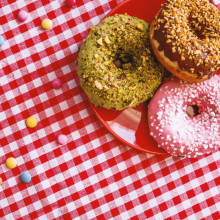
32:22 - What is the worst food?
What is the worst food?
Chris Smith asked dietician Sian Porter what she thought was food public enemy No.1...
Sian - I’m really against viewing single nutrients because, for a start, you need to have a healthy relationship with food. If you’re thinking about one type of food then it leads to the thinking about good and bad foods which, again, isn’t really a healthy way to view things.
As I said before, food comes as packages and you want to take a whole diet approach because, obviously, sugar has been public enemy No. 1 for probably the past couple of years. That’s lead to so much confusion because not all sugars are the same, and really the sugars that we should be worrying about are what we call ‘free sugars’ or the sugars that are added. That includes things like table sugars and it also includes things like syrup, so agave syrup, maple syrup, date syrup, Fruit juice falls into that category as well.
Sugar that you find in the cell of fruit and vegetables and lactose, which is the sugar that you find in milk and dairy products, that’s absolutely fine. I get people coming and saying to me “oh, I don’t have yoghurt because of all the sugar in it”. Actually, about 5% of the sugar in yoghurt is lactose so, if you’re looking on the back of a yoghurt, 100 grams, about 5 grams of that will be lactose. So it’s about you need to have a mixture of nutrients: fat, protein, carbohydrates.
Chris - What sort of amounts, relatively, of those? Because when I went to medical school people used to say you should get maybe half the calories in the day should come from fats or something, and then maybe about a third from carbs, and then 20% from protein, something like that. Does that still stand or have we moved away from that?
Sian - Yeah. There’s ways of looking at it. If you’re looking at population recommendations. Then if you’re looking at basing it on calories then it’s still around 50% of calories from carbohydrates, about 30% from fat, and about 20% from protein. But that’s population so it varies so much from individual. You’re not going to get your calculator out and work out that carbs have got 4 calories per gram, so 50% of my energy, you know…
I think a much simpler way is thinking about when you’re making up your plate, going back to having half your plate fruit and vegetables, about a quarter some lean protein, and don’t forget things like beans and pulses and about a quarter of your plate. So we’re talking probably about the size of your clenched fist of starchy carbohydrates, preferably high fibres, so things like whole grains, brown rice, brown pasta, potatoes with skins. Try and have some protein at every meal because your body like it better if you spread it out through the day. Stay hydrated. With fat, you want to watch saturated fat which is the one that can raise your cholesterol, and raised cholesterol is a risk for cardiovascular disease.
But, like I said, if you aim to have at least five portions of fruit and vegetables, some starchy carb, some fibre. And watch you portion size; that’s the other thing so it’s really important.
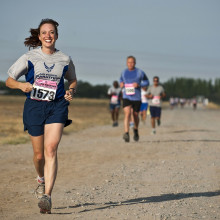
35:35 - Is there a difference between running outside and on a treadmill?
Is there a difference between running outside and on a treadmill?
ChrisSmith asked sport scientists Dan Gordon whether you get the same benefits from hammering along the pavement as you can from jumping on a treadmill in the gym.
Dan - In the broadest sense, yes. In the broadest sense you will get cardiovascular adaptations and so on and so forth. Actually, if we look at it metabolically, there’s quite a big difference. If you run on a treadmill and you just use a treadmill in the gym and run at the same speed, so let’s say you monitor you speed with a GPS watch outside, the amount of work that's being undertaken by the muscle is quite significantly different because the treadmill is doing quite a bit of the work for you.
What we find is that there’s an increase in what’s called the eccentric phase of the muscle action, that’s the lengthening of the muscle whereas when you’re running outdoors, that phase is reduced. Why is that important? Well, the eccentric phase of the muscle actually uses almost no energy. One of the ways you can combat that is set your treadmill gradient at 1%. A 1% gradient increases the metabolic costs. There was a beautiful study done back in the late 90s where they compared outdoor running to treadmill running and they found the same metabolic cost if it was on a 1% gradient.
However, that only works if you’re running for a short period of time because once you beyond ‘X’ amount time you now start getting to issues of thermoregulation, because when you’re outdoors of course, one of the thing you’ve got is the ability to dissipate heat into the environment. When you're in a gym and you're on a treadmill that heat dissipation is much much harder because you’re already running in a warmer room and we haven’t got the ability to remove the heat. So the net result is that although you’ll get the grand cardiovascular responses if you run because you’re just running and you’re running at the same relative speed, actually there are significant effects on muscle recruitment patterns between the two and significant differences for thermoregulation, and even potential for things like dehydration between the two.
Chris - Would you advocate then: save your money, just use the free gym called the stairs, park, the road?
Dan - Yeah. I mean I think it’s quite an interesting one. It’s often made me wonder why do people go to the gym to walk on a treadmill? I can understand it to a certain degree because I think there’s obviously a social side to doing it. But actually, I think in the end yeah, it’s free and the overall response is going to be better if you don’t use the treadmill.

37:52 - Do all animals sleep?
Do all animals sleep?
Chris Smith put this to Royal Papworth Hospital's Nick Oscroft...
Nick - All mammals and birds sleep as far as we’re aware. Reptiles also sleep but it’s a bit more tricky to measure, but we think they do. As you get to more primitive organisms, we know zebrafish have a resting state. There’s lots of scientific data about that and they’re often used in experiments to investigate sleep. Plants do have a light/dark cycle, but they don’t have a central nervous system so I’m not sure if they specifically sleep, but they clearly are sensitive to their environment. Then we get down to very primitive things like bacteria, most things exhibit a resting phase. Whether we could call that sleep in bacteria I’m not sure. But what I would call sleep in terms of it being quite a regulated process that happens at a certain time that you have to catch up with if you miss it, probably is something that happens more in the higher organisms rather than all the way down the food chain as it were.
Chris - What about the sorts of creatures like marine mammals that apparently can sleep half their brain at a time? Is this true or is it a myth and, if it is true, how do they do it?
Nick - There is evidence that they do have so called ‘hemispheric sleep’ in marine mammals as you state. But, also, other animals that need to keep swimming, for example, sharks because the need to keep seawater going through their gills to keep them oxygenated. You can make cats have hemispheric sleep if you do the right operation on them as well in scientific experiments. So yeah, that is true.
Chris - It’s called hemispheric sleep because just one hemisphere of the brain is deactivated into a sleep state at one time?
Nick - Yes, and that has been studied. Generally they tend to have non-REM sleep rather than REM sleep, and the reason for that being that when you go into REM sleep your body tends to actively paralyse you. Half of you becoming paralysed whilst you’re swimming probably wouldn’t help.
Chris - But bacteria: loose definition of sleep but they do have a metabolic bit of downtime?
Nick - Yes.

40:04 - Should I go gluten free?
Should I go gluten free?
Is there any health benefit to going gluten free if you're not gluten intolerant? Sian Porter set the record straight for Chris Smith...
Sian - well, thanks Emma that’s a very popular one. No. In fact gluten is a protein you find in grass related things like wheat, barley, rye, and oats. What it does it provides like a viscous - elastic network to give structure to those things. About 1% of the population suffers from coeliac disease, which is an immune disease which means they can’t tolerate gluten. We think about 6% of people might have what we call non-coeliac gluten intolerance, so they have the similar symptoms.
If you think about a lot of our diet can be wheat based, and say people may be having a cereal for breakfast, sandwiches for lunch and pasta for dinner. There is this theory that perhaps there’s a threshold, and the best way I would say for a healthy diet is to mix your carbs so have potatoes, rice, pasta to have have a variety. You get plenty of gluten free foods now but they're not necessarily more healthy.
Chris - And also they’re not very tasty.
Sian - No. Because if they’re missing that structure then they’ll have to adapt the recipe. They can be high in fat, sugar, salt. They can be low in fibre, low in protein and research has shown that often people who are avoiding gluten are then adding less healthy choices maybe like cakes and biscuits more into their diet.
Chris - Can I just ask; what portion of people think they have gluten intolerance and what proportion, if we go and test the population, really do have it?
Sian - There’s various studies that have looked at this, but a figure that’s quite often quoted is about 30% of people think that they have some kind of allergy intolerance but, actually, when it comes down to it it’s probably somewhere between 1 to 6%. People forget that if you take symptoms like bloating. If you think about a meal that you’ve eaten on a plate that foods got to go somewhere so it will go in your stomach. If you think about when your stomachs relaxed and then you’re putting food in it. It’s normal parts of digestion that people seem to have forgotten and also things like lack of fibre can produce gasterous symptoms. So I think it maybe things that should generally people are misinterpreting.
The other interesting thing that’s coming along is something called FODMAPs, which is Fermentable Oligosaccharides, Disaccharides, Monosaccharides and Polyols which are types of carbohydrate which do get fermented in the large bowel and can produce problems in some people. If people want to follow a FODMAP diet you can’t do it lightly. Go and see a dietician but yes it’s something that can be very useful for people and IBS and improves symptoms in about 75% of people, but you have to follow it properly.

42:53 - What is high intensity training?
What is high intensity training?
Chris Smith wanted to hear more about HIT from sport scientist Dan Gordon...
Dan - Okay. This is the big hot topic at the moment in terms of training. This is the notion that we can get fitter faster, and it’s really come about because there was some work done out in the US and Canada where it was quite obvious that people were saying the biggest impediment to being able to do exercise was a lack of time. Historically we’ve understood that interval training is actually a really potent stimulation for biological adaptation because you’ve got a high intensity block and low intensity block, so you can accomplish more than you would if you were doing low intensity exercise. There’s a real rationale for doing this.
The issue that comes with HIT is that I think there’s a lot of misunderstanding about what HIT training is. If we go back a little bit into the late 90s/early 2000s HIT was promoted as doing 30 seconds of maximum intensity exercise with about a 30 second recovery. Do it four times, three times a week and, low and behold, after four weeks we’ve got a biological adaptation.
Chris - It sounds too good to be true?
Dan - And it probably is too good to be true. I think a lot of the issues lie in the vast majority of the studies that have been done have been in controlled conditions. They’ve only been done over short periods of time and they tend to be done with a population group that you don’t really want to try them on which is students who are already relatively physically active.
Actually, what we do understand is that interval training does work. If you look at elite athletes they will do intervals, but the key is that intervals only work if you’ve put the foundations in. To get to that high intensity work, we’ve got to have done low intensity, cardiovascular work, because the key to intervals working is the recovery. If you can’t recover between the interval in the end what happens is that, in essence, you lose any of that biological gain.
Then it becomes really interesting because now we’ve got what’s called SIT. SIT is where the science has been fudged which is oh well, we didn’t really mean 30 seconds, that’s not what this kind of training is into now. They’re all into this really really short 10 seconds of exercise and 30 second recovery. I’m less convinced by this because if we think about that in terms of…
Chris - Tell me the regime then? If I wanted to do SIT training what would I do?
Dan - If you wanted to do SIT training you would come in and we would set a resistance up on the bike, which is probably about 7½% of your body mass. Then we would say to you that you are now going to sprint as hard as you can for 10 seconds and I’m now going to give you about 20 seconds recovery. I’m going to ask you to do that 10 times and then you’re going to do that three times a week. The evidence that’s come out from this, there’s some studies that have come out that showed improvement, and when I say improvement we’re talking about improvement in maximal oxygen uptake, which is our index of cardiorespiratory fitness after doing just 6 sessions.
Chris - That sounds like it’s good for muscle function. What about my blood pressure? Taking exercise to lower my blood pressure, taking exercise to reduce my risk of diabetes, stroke and heart disease. What about those impacts?
Dan - This is where it becomes really fascinating because there a lot of studies that are suggesting that if you do HIT/SIT training that it can reduce the incidence of type 2 diabetes. Suddenly the alarm bells go off in your head and you start thinking… really? And we’re talking about 8 to 12 weeks of exercise.
I just don’t think the science adds up. If I’m doing 10 seconds of training and I’m training the high-energy phosphates, the use of ATP and phosphocreatine. Although I’ve got a recovery in between those blocks the majority of the work is short duration so I can never quite make how that comes round to actually improving cardiovascular fitness. I can understand how doing intervals which are at a lower intensity but a much longer duration. If we took about 4 to 5 minute duration intervals, which is what Mo Farah would be doing then it works, and you can understand then how the blood pressure is reduced because you’re getting that engagement in central cardiovascular drive. But doing these very short intensity efforts, I’m less inclined to believe the fad.
Chris - So stick to a sensible regime that you know you can stick to so you can keep a routine and just the mantra ‘some exercise is better than no exercise’ is probably the rule of the day, isn’t it?
Dan - Yes, it really is, yeah.
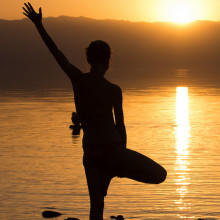
A mindfulness app
with Tom Mole, Cambridge University
Mindfulness is an ancient process, but can technology help us to get it right? Chris Smith hear from Tom Mole, Cambridge University psychiatrist who has designed a mindfulness app....
Tom - I think there is a growing recognition of mindfulness. I came from the background that a lot of people were getting into mindfulness, but there was this assumption that you can’t get feedback on or measure mindfulness. So if you were to go out and search for mindfulness app and to download it on their phone, most of the apps would just give audio instruction, and it might give a script such as: close your eyes and, for example, focus on the breath.
The problem with this is that if you imagine closing your eyes and doing an exercise for ten minutes without any feedback, what you’re really doing is you’re impairing the mind’s ability to learn from that process because you go out thinking did I do it right? I’m not sure if I was concentrated enough and then you might negatively appraise that and go well, I can’t meditate. Meditation is not for me or maybe I couldn’t stop thinking about something I said to someone else, going to the past or the future.
So what we’ve done in the Mindz app, which gives the first meditation feedback within the hour, is we’ve focused on playing a short bell sound to people when they are focused and when they are mindful in the moment.
Chris - How does it work; how does it know that?
Tom - We developed new technology where clever motion sensor algorithms in the phone can detect how you’re breathing and when you’re breathing by the user simply putting their phone on their abdomen, lying back in a chair somewhere comfortable - their sofa or a chair in the room. Then, as they leave their phone on their abdomen, that phone will slightly tilt and will oscillate almost in a sinusoidal pattern and that basically tells an algorithm of how you’re breathing. Then we just tell the user: just tap the screen whenever you breathe in.
This is all very geeky, but we’ll compare the gyroscope signal to when the user taps to work out whether it’s a good fit. Whether they’re tapping just when they breathe in or whether they’re distracted and dreaming of a Big Mac or their sleep hygiene or something like that, and they miss a tap.
Chris - Because that’s what happens to me when I try it. When people say obsess about your breathing, really focus on it and relax, and my mind is racing all the time. And the minute I get relaxed it immediately creates all this mental space which I then instantly fill with other rubbish and distractions and instantly I am not concentrating on relaxing. So something like what you're saying which gives you something to focus on helps you to exclude all those distractions?
Tom - It’s a concentration aid, and I think what you’ve described beautifully is what we call the default mode of the brain. If I sit you in a room or anywhere in life and I tell you not to do anything in particular, the brain will automatically start mind wandering. This happens about 50 to 60% of every hour of every waking day of your life. This tool is a way of helping you to become mindful by reinforcing that attention to the breathe and giving you feedback by playing short bells to when you’re concentrated. That this really fruitful skill that isn’t always easy - a bit like going to the gym or getting sleep hygiene, it’s quite a challenging habit. It gives you support in that.
Chris - Does it work?
Tom - Yes. The short answer but try it out. Mindfulness is built on an experiential evidence base as well as randomised control trials. But, in mindfulness people always say give it a go and see for yourself how you feel when you pay attention to your breath for ten minutes. I always encourage people to be the judge of that.
Chris - Are you getting the data back from users and is that becoming part of your PhD?
Tom - Yes. Hopefully the long term plan is we’ll probably have the largest dataset in the world. We’ve already got at least 15,000 mindful breaths taken on it. We hope it will continue to grow as well.
Chris - Isn’t that wonderful that you help the world to relax and then, in the course of them chilling out, they help you to get your PhD?
Tom - Fingers crossed!
Chris - And for people to be able to take part can you just tell them what to do? Where they go and get a copy of the app and how they can help Tom get his PhD?
Tom - Yeah. It’s freely available to all. You can go to mindz.com and download it. It’s coming soon for android but if you've got an iPhone you can download it right away for free. Sign up and find somewhere comfortable, lie back and take a few mindful breaths.










Comments
Add a comment